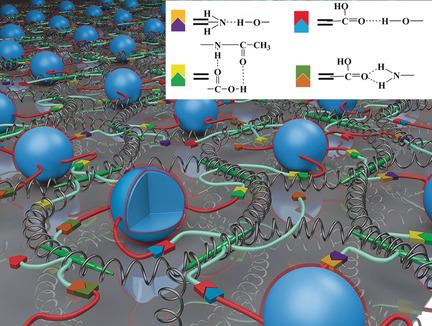当前位置:
X-MOL 学术
›
Angew. Chem. Int. Ed.
›
论文详情
Our official English website, www.x-mol.net, welcomes your
feedback! (Note: you will need to create a separate account there.)
Multiple Hydrogen Bonding Enables the Self‐Healing of Sensors for Human–Machine Interactions
Angewandte Chemie International Edition ( IF 16.1 ) Pub Date : 2017-06-14 , DOI: 10.1002/anie.201704217 Jie Cao 1 , Canhui Lu 1 , Jian Zhuang 2 , Manxiao Liu 3 , Xinxing Zhang 1 , Yanmei Yu 3 , Qingchuan Tao 3
Angewandte Chemie International Edition ( IF 16.1 ) Pub Date : 2017-06-14 , DOI: 10.1002/anie.201704217 Jie Cao 1 , Canhui Lu 1 , Jian Zhuang 2 , Manxiao Liu 3 , Xinxing Zhang 1 , Yanmei Yu 3 , Qingchuan Tao 3
Affiliation

|
Despite its widespread use in signal collection, flexible sensors have been rarely used in human–machine interactions owing to its indistinguishable signal, poor reliability, and poor stability when inflicted with unavoidable scratches and/or mechanical cuts. A highly sensitive and self‐healing sensor enabled by multiple hydrogen bonding network and nanostructured conductive network is demonstrated. The nanostructured supramolecular sensor displays extremely fast (ca. 15 s) and repeatable self‐healing ability with high healing efficiency (93 % after the third healing process). It can precisely detect tiny human motions, demonstrating highly distinguishable and reliable signals even after cutting–healing and bending over 20 000 cycles. Furthermore, a human–machine interaction system is integrated to develop a facial expression control system and an electronic larynx, aiming to control the robot to assist the patient's daily life and help the mute to realize real‐time speaking.
中文翻译:

多重氢键可实现人机交互传感器的自我修复
尽管柔性传感器在信号收集中得到了广泛的应用,但由于其难以区分的信号,可靠性差以及受到不可避免的划痕和/或机械割伤时的稳定性差,因此很少在人机交互中使用。演示了通过多个氢键网络和纳米结构导电网络实现的高度灵敏和自修复的传感器。纳米结构的超分子传感器显示出极快的速度(约15 s)和可重复的自我修复能力,具有很高的治愈率(第三次治愈后为93%)。它可以精确地检测出微小的人体运动,即使在经过20000次切割,愈合和弯曲之后,仍能显示出高度可分辨和可靠的信号。此外,
更新日期:2017-06-14
中文翻译:

多重氢键可实现人机交互传感器的自我修复
尽管柔性传感器在信号收集中得到了广泛的应用,但由于其难以区分的信号,可靠性差以及受到不可避免的划痕和/或机械割伤时的稳定性差,因此很少在人机交互中使用。演示了通过多个氢键网络和纳米结构导电网络实现的高度灵敏和自修复的传感器。纳米结构的超分子传感器显示出极快的速度(约15 s)和可重复的自我修复能力,具有很高的治愈率(第三次治愈后为93%)。它可以精确地检测出微小的人体运动,即使在经过20000次切割,愈合和弯曲之后,仍能显示出高度可分辨和可靠的信号。此外,


















































 京公网安备 11010802027423号
京公网安备 11010802027423号